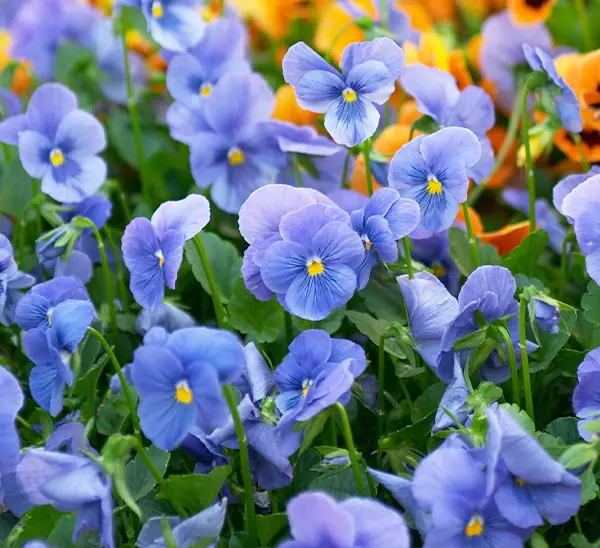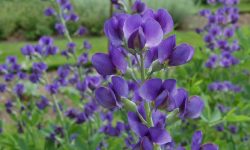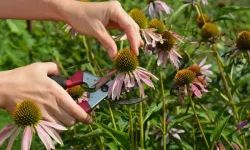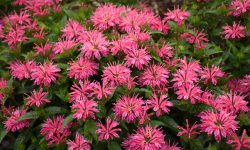Pansies are among the most beloved garden flowers, instantly recognizable for their cheerful “faces” and rich tapestry of colors. Whether spilling from hanging baskets or lining the edge of a flowerbed, these charming blooms add warmth and whimsy wherever they grow. But behind their delicate petals lies a common gardener’s question: Are pansies truly perennials, or are they just fleeting annual favorites?
Understanding the true nature of pansies isn’t just about categorizing a flower—it’s the key to unlocking longer bloom times, stronger plants, and more vibrant displays across the seasons. This guide will walk you through everything you need to know about how pansies grow in different climates, how to keep them blooming longer, and how to care for them so they return year after year—if conditions allow.
Understanding Pansies: Perennials or Annuals?

What Are Pansies?
Pansies are one of the most beloved garden flowers, known for their cheerful faces and wide array of colors. Scientifically classified under Viola × wittrockiana, these hybrid flowers are bred from several wild Viola species, offering a combination of durability and aesthetic appeal. Their blooms come in shades ranging from soft pastels to vibrant purples, yellows, and blues, often with contrasting blotches that resemble a face.
Are Pansies True Perennials?
Botanically speaking, pansies are short-lived perennials. In ideal growing conditions—particularly in mild climates—they can survive for multiple seasons. However, due to their sensitivity to heat and extreme cold, they are often grown as annuals or biennials in most regions. Gardeners typically treat pansies as annuals because their performance declines significantly after one blooming cycle, especially in hot summers or freezing winters.
Why Pansies Are Often Treated as Annuals
Pansies bloom best in cooler temperatures. In regions with harsh summers or bitter winters, their lifecycle is interrupted before they can complete another full season. Even in milder climates, many gardeners prefer to replace them each year to ensure consistently vigorous blooms. Treating pansies as annuals also simplifies care routines and maximizes their ornamental value.
Climate and Its Role in Pansy Longevity
Growing Pansies in Cold Climates
In USDA zones 3 to 6, the short growing season and harsh winters challenge the perennial potential of pansies. While some cold-tolerant cultivars can survive snow and mild freezes, prolonged exposure to sub-zero temperatures, especially without snow cover or mulch, often leads to winter kill. Gardeners in these areas typically treat pansies as colorful cool-season annuals, ideal for bridging the gap between spring bulbs and summer flowers.
To get the most out of pansies in these colder zones, start them indoors 6 to 8 weeks before the last frost and transplant them once daytime temperatures remain above freezing. Using mulch, frost cloths, or planting in protected microclimates near structures can increase survival rates during milder winters. Still, replanting each season remains the most reliable way to enjoy full, vibrant displays.
Thriving in Mild, Temperate Climates
USDA zones 7 to 9 provide ideal growing conditions for pansies to reach their full potential. These climates offer cool enough winters for dormancy without the deep freezes that kill roots. In these zones, pansies can be treated as biennials or even short-lived perennials that reappear in fall and flower continuously through early summer.
Gardeners in temperate areas often plant pansies in late fall, allowing them to establish strong root systems before winter. Because summer heat eventually triggers dormancy or decline, strategic placement in part-shade areas and consistent watering can help prolong blooming. With regular maintenance—such as deadheading faded flowers, fertilizing lightly, and trimming leggy growth—pansies can stay lush and full for months on end.
Growing in Hot or Tropical Climates
In USDA zones 10 and 11, where winters are mild and summers are hot and humid, pansies are seasonal showstoppers that thrive only during the coolest months. They’re typically planted in late fall when nighttime temperatures drop below 65°F and bloom beautifully through winter. By spring, however, rising temperatures and humidity quickly cause them to wilt, stop blooming, and eventually die back.
Because the intense heat and sun of tropical climates are too harsh for pansies to persist, these regions rely on pansies strictly as ornamental annuals. Gardeners can still enjoy a striking display by planting them in containers or garden beds in shaded areas and using them as vibrant accents from November through March. For longer performance, early morning watering, afternoon shade, and excellent soil drainage are crucial in these climates.
Choosing the Best Variety for Your Climate
Cold-Hardy Pansy Types
For gardeners living in colder climates, selecting pansy varieties bred specifically for frost resistance is essential to ensure vibrant blooms even in chilly weather. Cultivars like ‘Matrix’, ‘Cool Wave’, and ‘Delta’ are top choices, known for their ability to handle sudden temperature drops and even light snow. These varieties feature thicker petals and a sturdy growth habit, allowing them to remain upright and colorful through early spring frosts and late autumn chills. With proper mulching and occasional protection during deep freezes, these pansies can often survive longer than standard varieties.
Heat-Tolerant Varieties
In regions with hot or early-warming seasons, traditional pansies often wilt quickly. To enjoy longer-lasting blooms, choose heat-tolerant cultivars such as the ‘Nature Series’ or ‘Panola’. These varieties are specially bred to perform well in the shoulder seasons—fall through early spring—and are more resilient during short bursts of heat. While they still won’t thrive in the peak of summer, they tend to outlast other types and bounce back better from warm spells, making them ideal for gardeners in zones 8 through 10 looking to extend pansy color into late spring.
Hybrid Varieties for Extended Blooms
Hybrid pansies, including those that are interspecific crosses between violas and pansies, offer superior performance in unpredictable climates. These hybrids combine the best traits of both parents: the compact, floriferous nature of violas and the large, showy flowers of pansies. They tend to be more vigorous, bloom for longer periods, and adapt better to fluctuating temperatures. These varieties are perfect for gardeners seeking reliable color over multiple seasons or in regions where spring and fall weather can vary dramatically from year to year.
How to Care for Pansies as Perennials
Soil and Site Selection
Choosing the right soil and planting location is the foundation of growing pansies as long-lived plants. Pansies flourish in soil that is both rich in organic matter and fast-draining, with a pH range from 6.0 to 7.0. Amending your planting area with compost, leaf mold, or well-aged manure not only improves soil texture but also enhances nutrient retention—crucial for plants that are expected to last more than one season. For the site, look for an area that receives full sun during the cooler months to encourage strong blooming. As summer approaches, afternoon shade becomes critical, especially in warmer zones, to prevent heat stress and prolong the life of the plant. Elevated planting areas or well-aerated containers can reduce the risk of fungal diseases and promote healthy root systems.
Planting Tips for Long-Term Health
Planting pansies with a perennial mindset involves more than just digging a hole. Space each plant at least 6 to 10 inches apart to ensure airflow, which discourages powdery mildew and root rot—two common threats to pansies in humid conditions. In areas with heavy rainfall or poorly draining soil, consider building raised beds or adding perlite to improve drainage. When using containers, choose ones with multiple drainage holes and use a high-quality potting mix. For an extra boost, mix a slow-release fertilizer into the soil at the time of planting. Mulching with a thin layer of shredded bark or pine needles can moderate soil temperature and reduce weed competition, both of which help maintain vigor over time.
Watering Strategies for Different Seasons
Pansies prefer consistently moist soil, but their roots are susceptible to rot if they sit in waterlogged conditions. During the cool months of fall and early spring, water sparingly—only when the top inch of soil begins to dry. In hot weather, however, you’ll need to increase watering, especially if the pansies are in containers where soil dries out quickly. Use your fingers to check soil moisture before each watering, and aim to water early in the day to give the foliage time to dry before nightfall. This reduces the risk of fungal diseases. In dry climates or during summer heat waves, consider using drip irrigation or soaker hoses to deliver consistent moisture directly to the roots without soaking the foliage.
Fertilizing for Continued Bloom
Ongoing nutrition is vital to keep pansies blooming over extended periods. For best results, apply a balanced, water-soluble fertilizer—such as a 10-10-10 or 15-15-15—every four to six weeks. For gardeners seeking a more natural approach, compost tea or diluted fish emulsion can provide a steady supply of nutrients while also improving soil biology. Avoid overfeeding with nitrogen-rich fertilizers, which can lead to lush green leaves but few flowers. In early spring, top-dress your garden beds with compost or a slow-release organic blend to kickstart growth as temperatures warm. Mid-season, especially after deadheading or trimming leggy plants, a light feeding will encourage a flush of fresh blooms.
Fertilizing for Continued Bloom
Feed pansies with a balanced, slow-release fertilizer every four to six weeks during the growing season. Avoid high-nitrogen formulas, which promote leaf growth at the expense of flowers. For those treating pansies as perennials, use compost or organic amendments in early spring to replenish soil nutrients.
Pruning and Deadheading for Ongoing Blooms
Removing Spent Blooms
Deadheading is one of the most effective ways to keep pansies blooming beautifully throughout the growing season. By regularly removing spent or wilted flowers, you prevent the plant from channeling energy into seed production—a natural signal that flowering can stop. Instead, deadheading encourages pansies to focus on creating new buds, often leading to fuller and more frequent flushes of color. Use sharp scissors or your fingertips to pinch off the fading blooms just above a set of healthy leaves. This quick routine, done every few days, helps maintain a neat, vibrant display and can significantly prolong the plant’s flowering period well into the season.
Light Pruning and Shaping
In addition to deadheading, light pruning helps manage the overall shape and vigor of your pansies. When plants begin to look leggy, with long stems and fewer flowers, trim them back by one-third to promote bushier growth and more branching. This is especially helpful in late spring or during a mid-season lull in blooming. In climates where pansies overwinter, a more substantial pruning in early spring is recommended. Remove any frost-damaged or yellowing foliage and cut back old growth to allow light and air to reach the crown of the plant. This not only refreshes the appearance but also encourages healthy new shoots that will soon burst into bloom. Consistent pruning and shaping, when combined with proper feeding and watering, can make your pansies thrive for much longer than expected.
Overwintering Pansies Successfully
Mulching to Protect Roots
Pansies may appear delicate, but with the right care, they can endure surprisingly cold conditions. One of the most important steps in overwintering pansies—especially in USDA zones 6 and colder—is applying mulch before the first hard freeze. Spread a two- to three-inch layer of organic mulch such as straw, pine needles, finely shredded bark, or dried leaves around the base of the plants. This insulating layer regulates soil temperature, prevents frost heaving, and keeps the roots from freezing. Be careful not to pile mulch directly over the crown of the plant, as this can trap moisture and lead to rot. Once spring arrives and temperatures rise consistently above freezing, gently remove or thin the mulch to encourage new growth and airflow.
Moving Pansies Indoors or Into Cold Frames
For gardeners growing pansies in containers or those in particularly harsh winter zones, bringing the plants indoors or sheltering them in cold frames can greatly improve their chances of survival. Move potted pansies to an unheated garage, basement, or enclosed porch where temperatures stay above freezing but below 50°F (10°C). Place them near a bright window for natural light or supplement with grow lights to maintain their health during the darkest months. Alternatively, use cold frames—ventilated, sun-warmed enclosures that offer protection from snow, ice, and harsh wind. These frames provide a microclimate that keeps pansies growing slowly through winter or resting until conditions are right for a spring resurgence.
Timing Your Winter Prep
Begin preparing your pansies for winter in late autumn, before the first frost. Stop fertilizing by mid to late fall, as new, tender growth spurred by nitrogen is more susceptible to cold damage. Lightly prune back stretched or leggy stems, but avoid harsh trimming just before freezing weather. It’s also essential to maintain slightly moist soil—neither too dry nor waterlogged—to protect the roots. During mild winters, periodically inspect your pansies for signs of fungal infections, root rot, or pest activity, especially if mulch traps excess moisture. A quick check every couple of weeks can make a big difference in ensuring your pansies come back strong when spring returns.
Rejuvenating or Replacing Pansies in Spring
As winter fades and spring temperatures begin to rise, it’s time to assess the condition of your pansies and decide whether to rejuvenate the existing plants or replace them with fresh ones. In many regions, especially where winters are mild or where pansies were well-protected, these resilient flowers can bounce back with a little care. Begin by removing any dead or damaged foliage and spent blooms to stimulate new growth. Apply a balanced, slow-release fertilizer to give them a nutritional boost, and water consistently to keep the soil evenly moist. Within a couple of weeks, pansies that survived winter often produce a fresh flush of vibrant flowers.
However, if your pansies appear leggy, stunted, or diseased after winter—especially in climates with wet or freezing conditions—it’s best to replace them. Remove the old plants and refresh the soil by mixing in compost or organic matter to support new root development. You can then replant new nursery-grown pansies or start fresh from seed if the weather allows. This ensures continuous spring color and healthier, longer-lasting blooms that carry your garden into the warmer months with energy and charm.
Propagating Pansies for Perennial Enjoyment
Starting from Seeds
Starting pansies from seed is one of the most rewarding and economical ways to propagate them, especially for gardeners who want to enjoy a custom selection of colors and forms. Begin sowing indoors 8 to 10 weeks before your region’s last expected frost. Pansy seeds need darkness to germinate, so cover them lightly with soil or a sheet of black plastic. Maintain a consistent temperature between 65°F and 70°F (18–21°C) and ensure the soil stays evenly moist but not soggy. Germination typically takes 10 to 20 days.
Once seedlings emerge, move them to a bright location or under grow lights for at least 12 to 14 hours per day. As they develop their second set of true leaves, thin the seedlings and begin to harden them off about 1–2 weeks before transplanting outdoors. This process ensures healthy, compact pansies that can bloom profusely as early as late winter or early spring, depending on your climate.
Division and Cuttings
Although true pansies (Viola × wittrockiana) are usually not propagated through division due to their shallow root systems and short lifespan, closely related perennial violas and Johnny-jump-ups (Viola tricolor) often respond well to this method. To divide, gently dig up the clump in early spring or fall, then separate it into smaller sections with intact roots and shoots. Replant immediately in rich, well-draining soil and water thoroughly.
Propagation by cuttings is more experimental but possible with strong, healthy non-flowering stems. Take 2–3 inch cuttings just below a leaf node, strip the lower leaves, and insert them into a moist potting mix. Cover with a plastic dome or bag to maintain humidity and place in indirect light. Rooting may take a few weeks. Though slower and less reliable, this method is useful for preserving unique pansy cultivars or hybrids.
Saving and Storing Seeds
For gardeners who enjoy the full cycle of plant life, collecting pansy seeds is a satisfying process. Allow some flowers to fade naturally and form seed pods. When the pods begin to dry and split, harvest them before they burst open. Dry the seeds thoroughly in a paper envelope or on a screen in a cool, dark room for about a week.
Once dried, store your seeds in an airtight container with silica gel packets to reduce moisture and prevent mold. Keep the container in a refrigerator or a cool, stable environment, ideally below 40°F (4°C). Clearly label the seeds with the variety name and collection date, as pansy seeds can remain viable for up to two years under proper conditions. Saving seeds allows you to experiment with new combinations and helps preserve unique colors you’ve grown to love in your garden.
Pansy Care Through the Seasons
Caring for pansies throughout the year requires understanding their seasonal behavior and responding to environmental changes. With the right attention during each phase, you can enjoy lush foliage and vibrant blooms almost year-round—especially in temperate to mild-winter climates.
Early Spring: Wake-Up and Feed
As soon as the last frost has passed, inspect overwintered pansies or plant new ones for a burst of early-season color. Remove any dead or yellowed leaves left from winter. Apply a balanced, water-soluble fertilizer (such as 10-10-10) to kickstart growth and encourage blooms.
This is also a great time to begin deadheading spent flowers regularly, which redirects the plant’s energy toward producing more blooms instead of setting seed. Water deeply once or twice a week depending on rainfall, ensuring that the soil stays moist but not soggy. If temperatures start rising quickly, consider adding a light mulch layer to keep roots cool.
Late Spring to Early Summer: Maximize the Bloom Window
Late spring is usually the peak blooming season for pansies. Keep up with fertilization every 2 to 3 weeks using a bloom booster rich in phosphorus. Pansies thrive best in cooler temperatures, so provide partial afternoon shade if your region is warming quickly.
Watch out for aphids, slugs, and powdery mildew during this time. Treat organically with insecticidal soap or neem oil if needed. Consistent deadheading, weekly feeding, and proper spacing for airflow are key to maintaining healthy plants through late spring.
Midsummer: Managing Heat Stress
When summer temperatures regularly exceed 80–85°F (27–29°C), pansies may stop blooming and begin to look leggy or wilt. In hotter regions (Zones 7 and above), consider the following options:
Remove and replace pansies with warm-season flowers like zinnias or marigolds.
Cut back the foliage to about 2–3 inches if you want to try keeping them alive through dormancy.
Water deeply and mulch to insulate the soil and minimize temperature fluctuations.
Move container-grown pansies to cooler, shaded areas or indoors near bright windows.
Even though summer is a dormancy period in hot climates, in cooler coastal areas or high elevations, pansies might survive with minimal care and occasional watering.
Autumn: Prime Season for Planting and Root Growth
Fall is one of the best seasons to plant pansies, especially in Zones 6–10. Start new plants in late summer or early fall, roughly 6 to 8 weeks before the first hard frost. This allows the pansies to develop strong root systems before winter.
Amend the soil with compost or aged manure and ensure good drainage. Fertilize once at planting with a slow-release granular fertilizer, then again after the plants begin blooming. Water regularly and apply mulch to conserve moisture and prevent early cold snaps from damaging young roots.
Fall-planted pansies can bloom continuously through mild winters, providing vibrant color when most other plants have faded.
Winter: Protection and Patience
Pansies are cold-tolerant and can survive temperatures as low as 20°F (–6°C) with minimal protection. In regions with mild winters, they may continue to bloom intermittently on warm days.
In colder areas, apply a 2–3 inch mulch layer after the first hard frost to insulate the root zone. Avoid walking on frozen soil around pansies, as this can damage roots. Don’t fertilize during winter; resume feeding only when new growth appears in early spring.
For potted pansies, move containers to sheltered spots like porches or unheated garages, where they are safe from freezing wind but still receive some light.
By tailoring your pansy care routine to the seasons, you can ensure these cheerful flowers thrive longer, rebloom after dormancy, and return with vigor each year—especially in gardens where they’re treated as short-lived perennials or fall annuals.
Why Choose Pansies for Your Garden?
Long-Lasting Color in Cool Seasons
Pansies offer something most flowers cannot—a brilliant burst of color in the chilly months when gardens typically begin to fade. These charming blooms thrive in cooler temperatures, often blooming when other plants are still dormant. From early spring through late fall, and even into winter in mild climates, pansies bring life and vibrancy to flower beds, containers, and borders. Their bold, velvety petals come in an array of vivid colors and intricate patterns, from deep purples and rich oranges to soft pastels and bicolored blends, making them a standout addition to any garden.
Versatility in Garden Design
One of the biggest reasons gardeners choose pansies is their remarkable adaptability. Whether you’re filling hanging baskets, lining walkways, brightening window boxes, or layering seasonal containers, pansies fit effortlessly into almost any garden style. Their compact habit allows them to blend well with other spring or fall annuals and perennials, while their wide range of colors complements both modern and traditional landscapes. They’re equally at home in formal gardens as they are in cottage-style plantings, offering design flexibility and ease.
Ease of Growth and Maintenance
Pansies are beloved by both beginner and experienced gardeners because of how easy they are to grow. With just a bit of sun, fertile soil, and regular watering, pansies flourish with little effort. They’re low-maintenance, forgiving, and rarely suffer from serious pest problems. Their minimal care requirements make them an excellent choice for school gardens, public spaces, or any gardener looking for high impact with low input. And when provided with basic maintenance—like deadheading and occasional fertilization—they will reward you with continual waves of blooms.
A Favorite Among Pollinators
Beyond their beauty, pansies also serve a practical role in supporting early-season pollinators. In spring and autumn, when nectar sources are scarce, pansies provide a vital food source for bees and other beneficial insects. By planting pansies, you’re not just decorating your garden—you’re helping sustain local ecosystems. Some newer hybrid varieties are even bred to be more attractive to pollinators while still offering long bloom periods and intense color.
Cold Tolerance and Seasonal Transition
Pansies are among the few flowering plants that can withstand light frosts and rebound after cold snaps. This resilience allows them to act as a bridge between seasons—brightening gardens in the transitional months of early spring and late fall when summer flowers are fading or yet to emerge. In warmer zones, they bloom right through the winter, offering a rare splash of life during the coldest time of year. Their ability to adapt across climates and seasons is one of the strongest arguments for adding them to your planting scheme.
A Joy for the Senses
Finally, there’s the simple joy pansies bring to those who grow them. Their cheerful “faces,” delicate fragrance (especially in heirloom varieties), and velvety texture create a sensory experience that uplifts the mood and invites admiration. Whether viewed up close or from afar, pansies bring warmth, whimsy, and a sense of timeless charm to any setting. In a world of fleeting blooms, pansies offer a sense of continuity and comfort, reminding gardeners that even in the cooler seasons, beauty never fades.
Frequently Asked Questions About Pansies
Are pansies perennials or annuals?
Pansies are technically short-lived perennials, but they’re often grown as annuals or biennials depending on the climate. In mild regions, pansies can survive winter and bloom again in spring, making them act more like perennials. In colder zones, however, they’re usually treated as cool-season annuals and replanted each year.
Can pansies survive frost and snow?
Yes, pansies are among the hardiest bedding flowers and can tolerate light frost and even snow. Their roots remain viable as long as the ground doesn’t freeze solid. To help them survive harsh conditions, mulch around the base of the plant in late fall, and water them well before the first hard freeze.
How long do pansies bloom?
Pansies can bloom continuously for several months if conditions are right. In cooler climates, they bloom in spring and fall, while in warmer areas they can flower from fall through early spring. Deadheading spent blooms and keeping the plants cool and moist will help extend the blooming season.
When is the best time to plant pansies?
For most regions, the best time to plant pansies is either in early spring or in the fall. Spring plantings provide blooms through early summer, while fall plantings often bloom again in late winter or early spring. Starting seeds indoors 8–10 weeks before your last frost gives you a head start on the growing season.
Can I grow pansies indoors?
Yes, you can grow pansies indoors in containers, especially during winter. Choose a bright window with at least 6 hours of sunlight per day. Keep the temperature cool (ideally between 50–65°F or 10–18°C), and water regularly to maintain even moisture. Use a well-draining potting mix and feed with a balanced liquid fertilizer every 2–4 weeks.
Conclusion
Pansies are more than just cheerful flowers—they’re resilient, versatile, and perfect for gardeners of all experience levels. Whether you’re looking to brighten up a spring border, add late-season color in fall, or enjoy reliable blooms through the cooler months, pansies never disappoint. With their charming faces, wide color palette, and ability to thrive in varying conditions, they offer both beauty and practicality. By understanding how to plant, care for, and even propagate pansies, you can enjoy their vibrant presence year after year. So go ahead—let pansies bring a pop of joy and lasting color to your garden.






